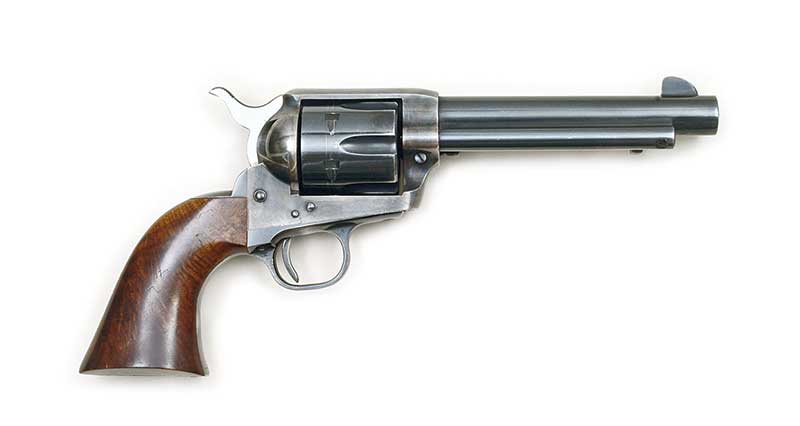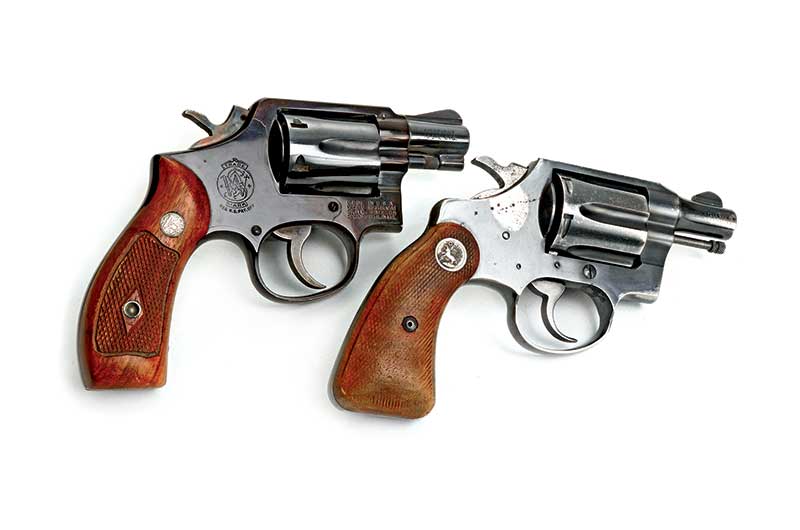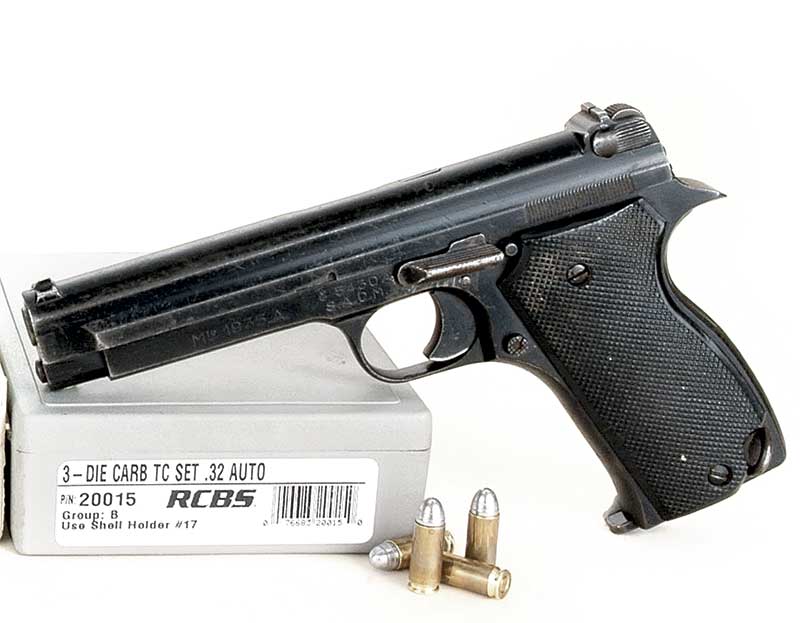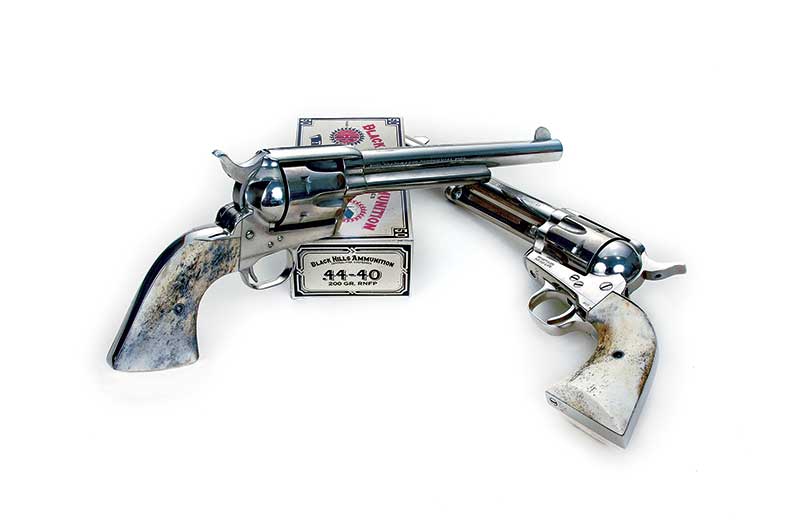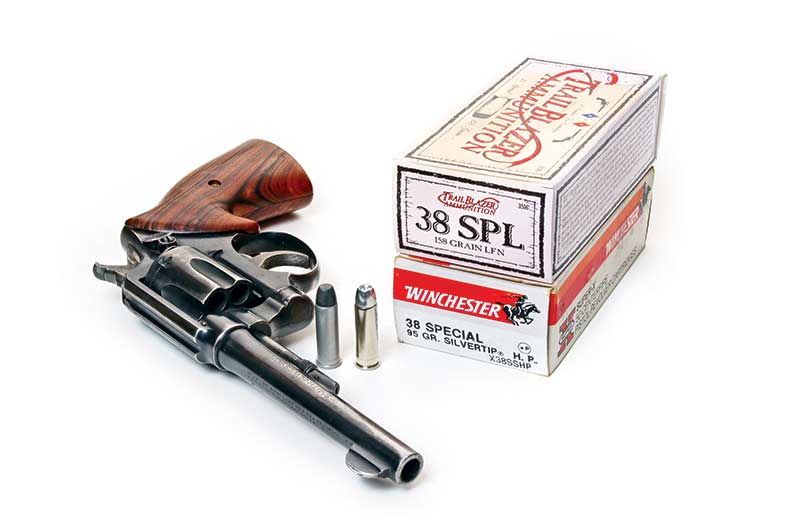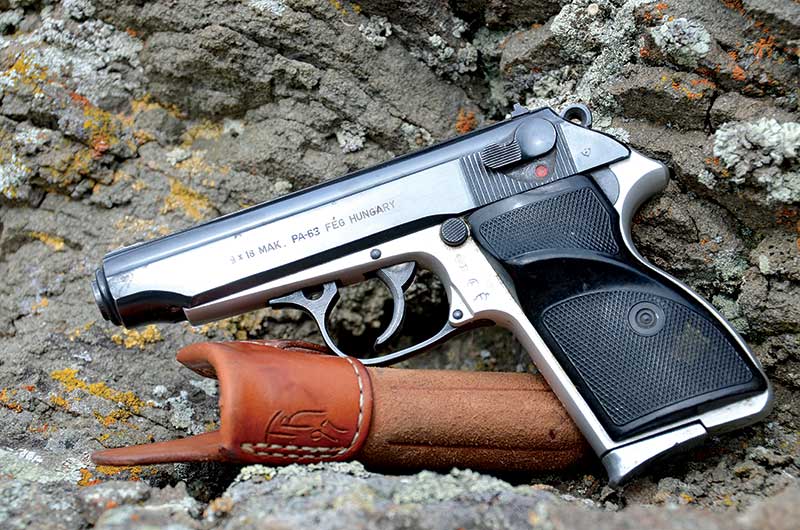A Lifetime Spent With Handguns
Good Ones, Bad Ones And Strange Ones
My life has been full of handguns — to the tune of several hundred. These have been both personally owned, or sent on consignment from their manufacturers for use in articles. They’ve ranged from cap and ball single action revolvers to the most modern semi-autos. In bore size there have been .22 rimfires on the small side and .454 Casulls on the big end. Some I have liked and held onto for decades. Others I detested and sold as soon as possible. And some few I kept for decades before selling them simply because they had no purpose in my lifestyle anymore.
A prime example of that latter category was a Smith & Wesson .44 Magnum made so early it wasn’t even stamped “Model 29.” I bought it in 1968 from a deputy sheriff in Mingo County, West Virginia, the site of the famous Hatfields and McCoys. He in turn had purchased it brand new in 1957. It had a wooden presentation case, 4″ barrel and 18 rounds left of the first 50-round box of factory ammo the deputy purchased with the gun. Along the way in 1973 I had it fitted with a 61/2″ barrel and then sent it back to the S&W factory in 1974 for cutting to 5″.
On a visit to Elmer Keith in Salmon, Idaho, I mentioned the old 4″ barrel. He traded me one of his books for it. I carried the revolver many miles when camping in the grizzly habitat north of Yellowstone National Park but never had to fire it in earnest. In 2010 I sold it because as said above — my lifestyle just had no need for it anymore.
First Guns
Often, I’ve mentioned in my writing my first centerfire revolver was a Smith & Wesson K38 Masterpiece. But it wasn’t actually my first handgun. It was the first one I could shoot. The true “first” was of all things a French Model 1935 7.65mm long. About age 12 I wanted a “real” handgun more than anything. One day my dad came home with that French autoloader. He felt safe giving it to me because no ammunition was available. I still had to abide by all safety rules though.
Eventually he told me he got it from our local chief of police who was also part of our town’s rather large Italian community and it had been taken off a drunk he arrested. In 1965 some military surplus ammunition became available and my father ordered 100 rounds for me. The old pistol wouldn’t fire a full magazine without jamming up. Perhaps it was because I had “messed with it” for years without a clue as to what I was doing.
In 1968 I sold it to a friend for the grand sum of $12.50. Incidentally my friend was also the son of the chief of police. A few years ago I bought another French Model 1935 because it reminded me of both my father and that friend, who passed away at age 21 from cancer. Factory ammo still isn’t available but now I can handload for it and this one doesn’t jam at all.
Speaking of handloading I began doing this in 1966 after purchasing my K38, never dreaming reloading ammunition and casting bullets would become nearly the passion for me as shooting. Of course .38 Special was my first cartridge reloaded and I stopped keeping count after putting together over 60,000 of those.
As of this writing I’ve now had experience assembling ammunition for over 125 different calibers; split about half and half between rifle and handgun chamberings. I’ve reloaded the .44 Smith & Wesson American, which was America’s first reloadable handgun cartridge. My handgun for it was an 1871 vintage S&W Model #3. I think the most modern handgun cartridge I’ve reloaded is the .357 SIG, the rounds of course were fired in a SIG pistol but I don’t remember the model number.
Colt’s 1873
One handgun about which I was nigh-on obsessed until finally landing one was a Colt SAA .45. This was back in 1968. A summer job between my first and second years of college was moving freight on the docks for a trucking company. A friend worked there too and one day he said, “Hey Mike, this guy says he has one of those cowboy .45’s you’re always yakking about.” The guy was one of the truck drivers and I literally begged him to bring that .45 to work so I could see it as I’d never actually seen a Colt SAA in person. He promised to but weeks went by and he never did.
Then one Friday after work he called and said, “Do you want to buy that Colt .45? I’ll sell it for $100 if you want to meet me back at the docks.” It had been payday and at $1.60 an hour he got my entire pay after taxes, but by golly it was a genuine Colt .45 with a 51/2″ barrel, which I later found was of 1964 manufacture. And it was in immaculate condition except for missing its original grips. It was the first of over 50 Colt SAA’s I’ve owned. My favorite calibers turned out to be .44 and .38 WCF (.38-40 and .44-40).
Earlier I mentioned detesting a few handguns. This will probably raise the ire of some readers but one of those was a Thompson/Center Contender, for which I traded a .50 caliber Thompson/Center Hawken muzzleloader. The barrel that came with the Contender was for a .222 Remington. As I remember it also wore a scope but I cannot recollect what brand. At that same time I also owned several .222 Remington varmint rifles and after firing the single shot a few rounds I thought, “Why take the buttstock off a perfectly good rifle?” It was sold ASAP, but that’s just me, and I know people — even His Editorship — who enjoy those guns a great deal.
Another pistol I detested was won as a door prize. I don’t remember the maker’s name now but it was a two-shot .25 ACP derringer. I found one round for it in a box of old cartridges, fired it, and then immediately sold it because I deemed it unsafe to carry in my pocket.
Long Term
The two handguns I’ve owned the longest now were purchased in 1977 and 1978. The 1977 one started as a Colt SAA .357 Magnum. Being an avid Skeeter Skelton fan my intention from the beginning was to convert it to .44 Special. And I knew exactly where I could buy two original Colt unused .44 caliber barrels — one 51/2″ and the other 71/2″. That Colt got the 51/2″ one along with both .44 Special and .44-40 cylinders. When we became affluent enough to afford a horse and Yvonne began riding it into Montana’s hills I gave it to her to carry.
The handgun bought in 1978 was for practical matters. We needed a “truck” gun to carry in case we hit a deer on Montana’s lonesome roads. It’s legal to carry one in a vehicle here but it was not legal to shoot an injured deer yourself. Still people did it — and still do — as the humane thing to do. The gun is a 1940’s vintage Smith & Wesson Military & Police .38 Special with a 5″ barrel. It’s one of the smoothest functioning revolvers of my considerable experience and it did get used for its intended purpose.
Perhaps my most treasured handgun at this writing is a .45 single action from the now defunct U.S. Firearms Company. About 2005 they introduced a Custer Battlefield model made exactly as the one on display at the Little Bighorn Battlefield Museum. When ordering mine I was told I could ask for a specific serial number and was amazed no one yet had asked for 1876 — the year of the famous battle. I got it.
And lastly my most recently purchased handgun is an exact duplicate of one I purchased in 1993 and still have. I bet it will surprise readers familiar with my articles to know it’s a Hungarian made FEG PA63 in 9mm Makarov caliber (9x18mm) which is simply a knock-off, more or less, of Walther’s much respected Model PP. Why did I want two of these? One reason is they are finely made pistols. Another is I paid $120 for the one in ’93 and only $200 for this one. They are my current “truck” guns, although today I’m more worried about human assailants than injured deer and that’s the reason I’ve also laid in several types of “pocket pistols” and snub nose revolvers. The world has changed that much.
And that’s a brief synopsis of my 50 years of handgunning. I’ll confess it’s been a ball — and continues to be!


